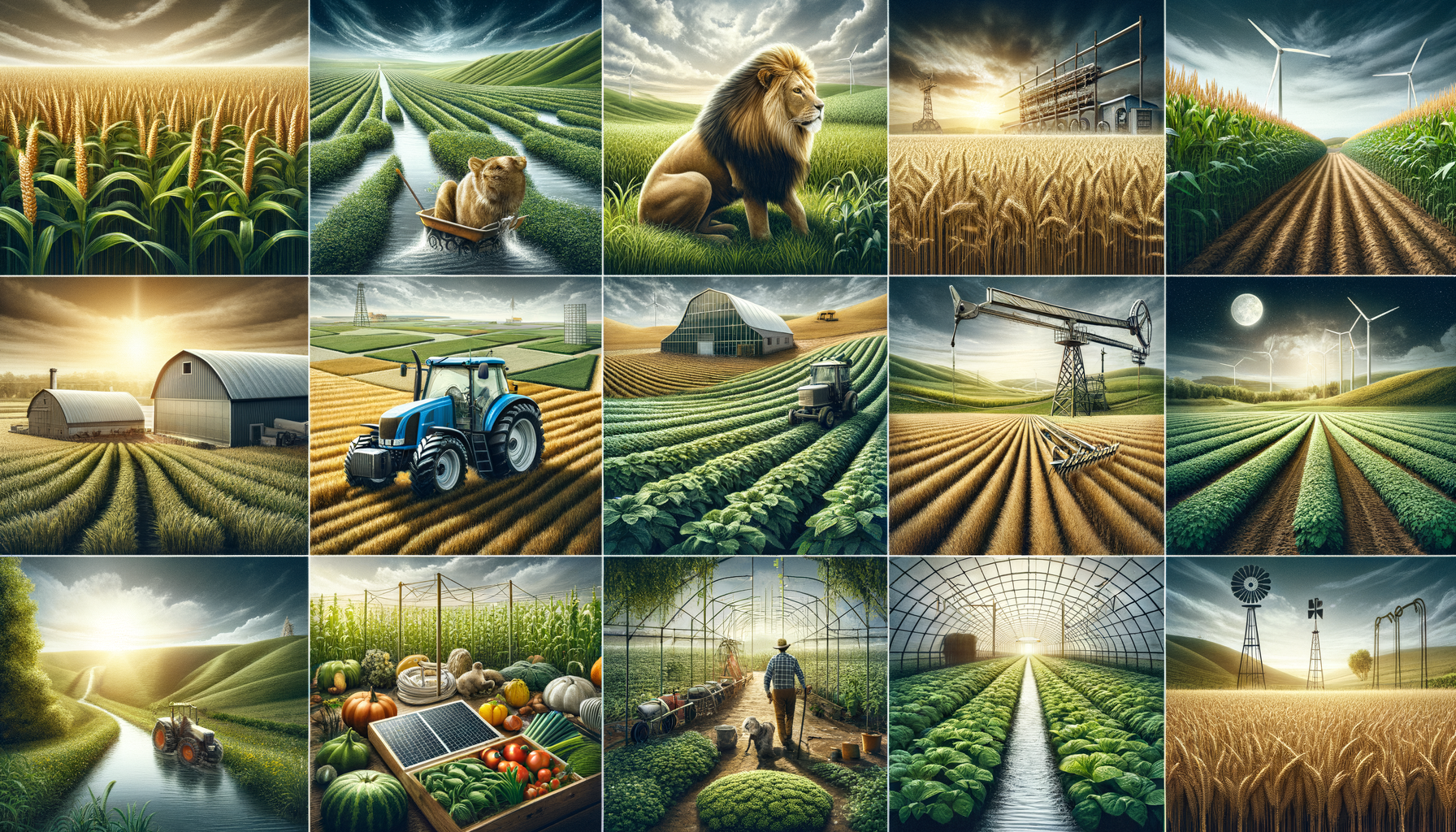
The Variety of Farming Practices and Essential Equipment
Introduction to Modern Farming
Farming has evolved significantly over the years, transforming from traditional methods to a more sophisticated and technology-driven practice. This evolution is driven by the need to increase productivity and sustainability in the face of a growing global population. Modern farming encompasses a wide array of practices, each tailored to specific environmental conditions and agricultural goals. In this article, we explore the variety of farming practices and the essential equipment that supports them, highlighting the dynamic nature of agriculture today.
Organic Farming: A Sustainable Approach
Organic farming is a method that emphasizes the use of natural inputs and processes to cultivate crops and raise livestock. This practice avoids synthetic fertilizers and pesticides, instead relying on techniques such as crop rotation, green manure, and biological pest control. Organic farming is not only about producing food but also about maintaining ecological balance and conserving biodiversity. It plays a crucial role in sustainable agriculture by reducing environmental impact and promoting soil health.
Organic farms often require specific equipment to manage their unique processes. For instance, mechanical weeders and compost turners are essential for maintaining soil fertility and controlling weeds without chemicals. The demand for organic produce has seen a steady increase, making organic farming a vital component of the agricultural landscape.
Hydroponics: Farming Without Soil
Hydroponics is a soilless farming technique that allows plants to grow in nutrient-rich water solutions. This method is particularly beneficial in areas with poor soil quality or limited arable land. Hydroponics systems can be set up indoors or in greenhouses, providing a controlled environment for plant growth.
The success of hydroponics relies on precise monitoring and control of nutrients, pH levels, and water temperature. Essential equipment for hydroponics includes grow lights, pumps, and nutrient delivery systems. This innovative approach to farming offers several advantages, such as faster plant growth, reduced water usage, and the ability to produce crops year-round.
Agroforestry: Integrating Trees and Crops
Agroforestry is a farming practice that integrates trees and shrubs into crop and livestock systems. This approach enhances biodiversity, improves soil structure, and increases resilience to climate change. By combining forestry and agriculture, farmers can optimize land use and create more sustainable farming systems.
Agroforestry requires careful planning and management to ensure that trees and crops complement each other. Tools such as chainsaws, pruners, and mulchers are essential for maintaining tree health and productivity. Agroforestry offers a promising solution for enhancing food security while preserving natural resources.
Essential Farm Equipment for Modern Agriculture
The efficiency of modern farming heavily depends on the availability and use of appropriate machinery. Key equipment includes tractors, harvesters, and sprayers, each playing a vital role in different stages of the agricultural process. Tractors, for instance, are versatile machines used for plowing, planting, and towing other equipment.
Harvesters are crucial for efficiently collecting crops, reducing labor costs, and minimizing crop loss. Sprayers help in the precise application of fertilizers and pesticides, ensuring optimal plant health. Additionally, many farms are adopting smart technology, such as GPS-guided systems and drones, to enhance precision agriculture. These technologies enable farmers to monitor crop health, optimize resource use, and improve overall farm management.
Conclusion: Embracing the Future of Farming
Farming is an ever-evolving field that continues to adapt to the challenges of a changing world. By embracing diverse farming practices and integrating advanced equipment, farmers can enhance productivity, sustainability, and resilience. Whether through organic farming, hydroponics, or agroforestry, each method contributes uniquely to the agricultural ecosystem. The integration of smart technology further supports these efforts, paving the way for a more efficient and sustainable future in farming.


